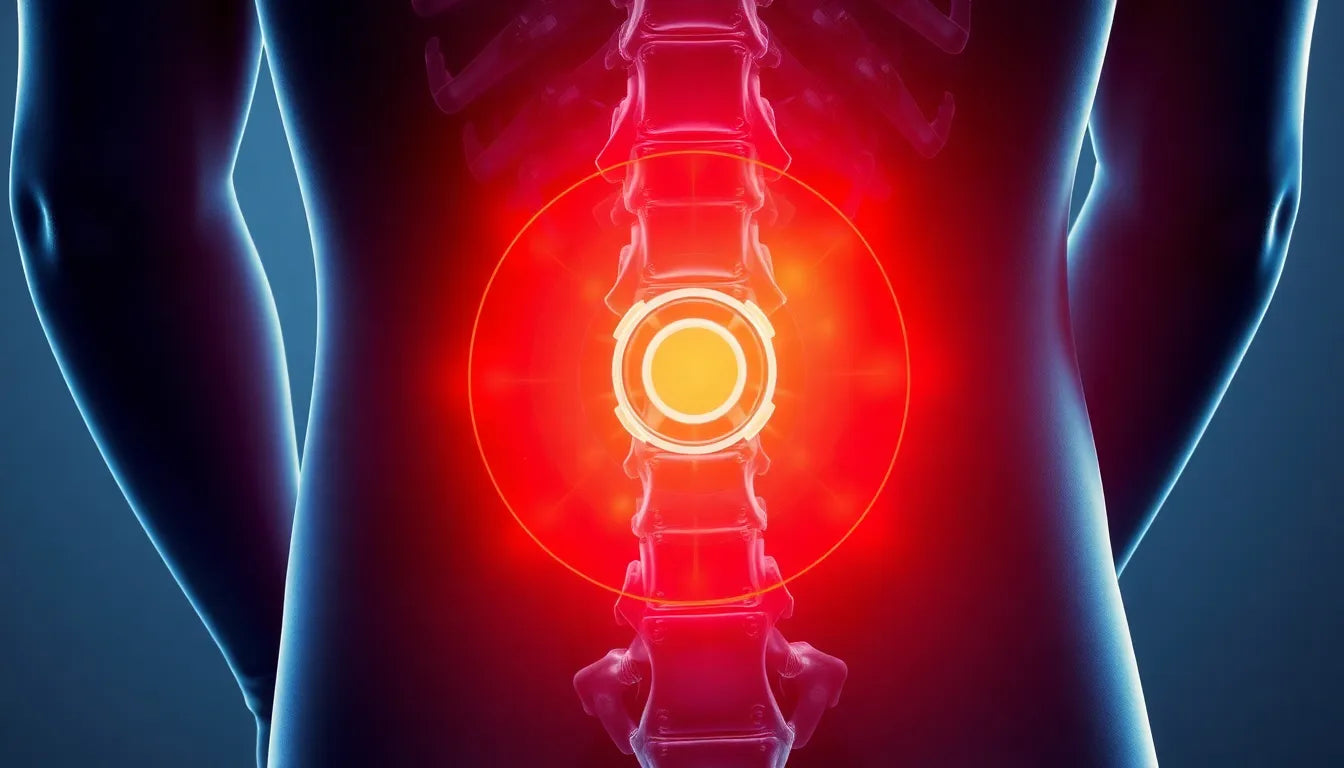Understanding the nuances of a herniated disc is crucial for anyone experiencing persistent back pain or related symptoms. A herniated disc occurs when the soft center of a spinal disc pushes through a crack in the tougher exterior casing. This condition can lead to discomfort and a range of symptoms, including back pain, sciatica, numbness, and tingling sensations. Recognizing these signs early on is essential, as timely detection can significantly influence the management and treatment of symptoms, preventing further complications.
Why self-testing matters
In the realm of health management, self-awareness and proactive measures are invaluable. Self-testing for a herniated disc serves as a convenient and accessible first step for individuals who suspect they might be dealing with this condition. While self-tests are not a substitute for professional medical evaluation, they can provide preliminary insights that help individuals decide whether to seek further medical advice. The convenience of self-testing allows individuals to assess their symptoms in the comfort of their own homes, offering a practical approach to health monitoring.
Self-tests are particularly beneficial because they empower people to take charge of their health, offering a sense of control over their well-being. For those experiencing symptoms like persistent back pain or sciatica, self-testing can help determine whether these symptoms might be linked to a herniated disc. By identifying potential issues early, individuals can make informed decisions about consulting healthcare professionals for a comprehensive diagnosis and appropriate treatment plan.
In conclusion, understanding the role of self-testing in the detection of a herniated disc is a valuable step in managing one's health. While these tests offer initial insights, they should always be followed by professional medical advice to ensure accurate diagnosis and effective treatment. As we delve deeper into the specifics of self-testing and professional evaluations, it's important to remember that knowledge and early action are key to maintaining spinal health and overall well-being.
Medical diagnosis process for herniated discs
When it comes to diagnosing a herniated disc, the medical process is thorough and multifaceted. It typically begins with a detailed medical history, where healthcare providers assess symptoms, lifestyle factors, and any previous back issues. This is followed by a physical examination, which is crucial for identifying the presence of symptoms like pain, numbness, or weakness that may indicate nerve involvement.
Advanced imaging techniques are often employed to confirm the diagnosis. Among these, Magnetic Resonance Imaging (MRI) stands out as the gold standard. An MRI provides detailed images of the spine, allowing doctors to pinpoint the exact location and extent of the disc herniation. In some cases, additional imaging tests such as CT scans or myelograms might be used if an MRI is inconclusive or unavailable. While these tests are essential for a definitive diagnosis, it's important to note that self-tests can serve as an initial step in identifying potential issues before seeking professional evaluation.
Physical and clinical tests for herniated disc detection
Several physical and clinical tests are commonly used to assess the likelihood of a herniated disc. These tests are designed to reproduce symptoms and provide clues about nerve involvement. One of the most widely recognized tests is the Straight Leg Raise (SLR) test. During this test, the patient lies flat and raises one leg without bending the knee. If this action reproduces radiating pain, it suggests nerve involvement from a herniated disc. The Contralateral SLR, or Crossed SLR, is a variation where raising the opposite leg also causes pain, increasing specificity for disc herniation.
The Slump Test is another valuable tool, especially for detecting lumbar disc herniation. It involves a seated posture with a slumping position and leg extension. Reproduction of pain during this test supports the diagnosis of nerve involvement. For cervical herniated discs, the Spurling Test is often used. This test involves side-bending the neck and applying pressure to see if it reproduces arm or hand symptoms, indicating a possible cervical disc issue.
Neurological examination for comprehensive assessment
A thorough neurological examination is an integral part of the diagnostic process for herniated discs. This examination typically includes sensory testing, muscle strength assessment, and reflex testing. These tests help determine the extent of nerve impairment and guide treatment decisions. Sensory testing evaluates areas of numbness or tingling, while muscle strength assessments identify any weakness in specific muscle groups. Reflex testing provides insights into nerve function and can reveal abnormalities that suggest nerve root irritation.
In addition to these tests, healthcare providers may also assess for abnormal gait or signs of foot drop, which can occur if a herniated disc affects certain nerve pathways. By combining the results of these physical and neurological tests, medical professionals can form a comprehensive understanding of the condition and develop an appropriate treatment plan.
While self-tests like the SLR and Slump Test can provide preliminary insights, it's crucial to remember that they do not replace a professional medical evaluation. If self-tests indicate a potential herniated disc, seeking professional advice is essential to confirm the diagnosis and explore treatment options. Early intervention can significantly improve outcomes and help individuals manage their symptoms effectively.
Self-testing at home for herniated discs
For those experiencing symptoms suggestive of a herniated disc, conducting self-tests at home can be a valuable first step. The Straight Leg Raise (SLR) test is one of the simplest and most effective ways to assess nerve involvement. To perform the SLR test, lie flat on your back and slowly raise one leg without bending the knee. If you experience radiating pain, it may indicate nerve compression from a herniated disc. However, it's crucial to interpret these results with caution and seek professional advice for confirmation.
Another useful self-test is the Slump Test, which is particularly relevant for lumbar disc herniation. To conduct this test, sit on a chair with your hands behind your back, slouch forward, and extend one leg. If this posture reproduces pain, it may suggest nerve involvement. Again, while these tests can offer preliminary insights, they are not a substitute for professional medical evaluation.
When to seek professional help
While self-tests can be informative, certain symptoms should prompt immediate medical attention. If you experience severe or worsening pain, significant weakness, or loss of bladder or bowel control, it's essential to consult a healthcare provider promptly. These symptoms can indicate more serious conditions requiring urgent intervention.
Even if your symptoms are not severe, it's advisable to seek professional guidance for a comprehensive evaluation and treatment plan. A healthcare provider can confirm the diagnosis through a combination of medical history, physical examination, and imaging tests, such as MRI, which is the gold standard for diagnosing herniated discs.
Frequently asked questions
What is the most common symptom of a herniated disc?
Sciatica, characterized by pain radiating down the leg, is one of the most common symptoms associated with a herniated disc.
Can I rely solely on self-tests for diagnosis?
No, self-tests are preliminary tools meant to provide initial insights. They should always be followed by a professional medical diagnosis for confirmation and appropriate treatment.
How effective are MRIs in diagnosing herniated discs?
MRIs are highly effective and considered the gold standard for diagnosing herniated discs, as they provide detailed images of the spine and the extent of any disc herniation.
What should I do if self-tests indicate a possible herniated disc?
If self-tests suggest a potential herniated disc, schedule an appointment with a healthcare provider for a thorough evaluation and to discuss treatment options.
Are there any risks associated with self-testing?
When performed correctly, self-tests are generally safe. However, improper technique or overexertion during these tests may cause discomfort or exacerbate symptoms. Always perform them cautiously and consult a professional if unsure.
In summary, while self-tests like the SLR and Slump Test can provide useful preliminary insights into the likelihood of a herniated disc, they are not definitive. Professional medical evaluation is crucial to confirm the diagnosis and develop an effective treatment plan. By staying informed and proactive about your health, you can better manage symptoms and maintain spinal health.
```html
Sources
- Spine-health. "Medical/Clinical Diagnostic Steps for Herniated Discs."
- Barricaid's Blog. "How-to for Home Self-Testing for Herniated Discs."
- UCHealth. "Clinical Approach to Herniated Disc Diagnosis."
- Physiopedia. "Comprehensive List of Physical and Neurological Testing for Herniated Discs."
- WebMD. "Consumer-Focused Overview of Herniated Disc Symptoms and Imaging."
- OrthoInfo AAOS. "Explanation of Straight Leg Raise Test and Its Predictive Value."
- YouTube. "How-to Video Demonstrating Self-Test Techniques for Herniated Discs."























